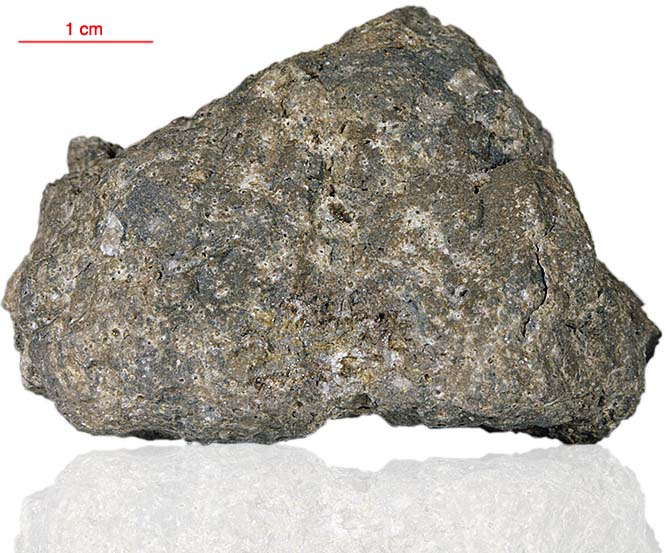
Fact sheet
73155 is part of the “light mantle” deposit. The interest in 73155 is related to two prominent micrometeorite craters that nearly ruptured the rock. The rock is a collection of clasts of plutonic rocks, cemented together with a feldspathic melt with poikilitic texture. There are numerous plagioclase clasts and a prominent gabbroic clast (see rotation 2) in the matrix. Rotation 1 shows a polygonised, plagioclase feldspar-rich clast.
The sample weighed 79.3 grams before analysis and has been dated at 3.90-3.94±16 billion years (Ar/Ar).
Further details of this and other Apollo samples are here: http://curator.jsc.nasa.gov/lunar/
Apollo 17, the final manned landing mission, had two objectives: to obtain samples of ancient rocks from the lunar highlands and to look for evidence of younger volcanic activity on the valley floor.
This small Collection contains material deriving from both periods, including igneous rocks around 4.3 billion years old from the lunar highlands as well as younger volcanic samples dating from about 3.6 billion years ago.
Apollo 17 was launched on 7 December 1972.






